Parque Natural de Urkiola · Ayuntamiento de Abadiño
Situación
Menú principal
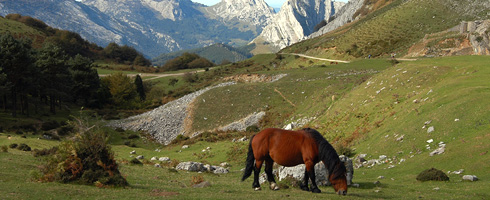
Thickets and pastureland make up a large area of the Park and it initially does not appear to be the most suitable shelter for vertebrates. However, as it is so sunny and abundant in vegetation, there is a large community of invertebrates, both in terms of species and the number of individuals. This wealth of insects, molluscs, annelids and other invertebrates attract numerous forest animals that go the meadows and thickets in search of food.
Apart from the occasional visitor, such as the fox or wild boar, this open grassland and thickets are home to various reptiles, birds and mammals. The reptiles include the slow worm and green lizard, while the European stonechat, the Northern wheatear and northern harrier are some of the species of birds to be found there. Some of the Urkiola thickets are home to a reptile that is of great interest in terms of Eastern Cantabrian fauna: the Iberian Emerald lizard. In 2005, the red partridge was reintroduced in Aramotz with the aim of recovering the populations that used to live there.
Some mammals are also to be found here, consisting of the crowned shrew, the mole, common weasel and the northern hare.
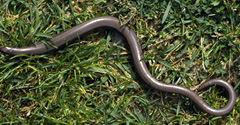
Legless saurian, long, cylindrical body and with hardly any neck. Rarely grows beyond 50 cm in lenght. It is covered in shiny and very smooth scales that are brown, light brown or cream in colour. It feeds off hagfish, snails, earth worms, spiders and insects. It is relatively common in thickets and long grass. It is totally harmless.
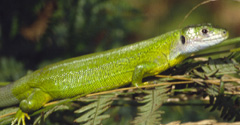
Green lizard that is up to 30 cm in length. There are dark dots on its body and there may be light or dark blue patches on its throuat. The underneath of the body and tail are yellow. It prefers overgrown thicket and mainly feeds off insects, arachnids, snails and hagfish. The adults may hunt small lizards and mammals. It is not common in the Park and is hard to see thanks to its camouflage.
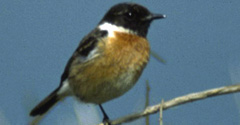
Small bird up to 13 cm in length with a very marked sexual dimorphism. The male has a black head with a white mark on the sides of its neck and its chest is orangey-brown. The female is much lighter in colouring. It mainly feeds off insects and it can often by seen perching on the top of a bush moving its tail up and down.
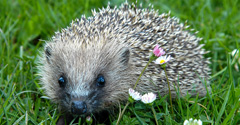
Mammal with a round body, that is 25 cm in length and covered with tough quills. Quills are modified hair, dark brown or black in colour with white tips. The face, belly and the end of its limbs are covered with fine hair. It feeds off hagfish, worms and a wide range of insects. It is a nocturnal animal and makes a great deal of noise as it moves through the undergrowth. It hibernates in winter.
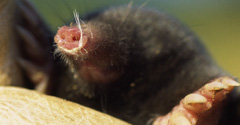
A mammal with a cylindrical body, with very short feet pointing outwards and covered with a very fine black velvety coat.. The front feet are suitable for digging as the sole is spade-shaped and its nail are long and strong. It nearly always lives underground in a complicated tunnel system. Molehills are formed up the earth it removes as it digs its tunnels which it brings to the surface. It feeds nearly exclusively on worms.
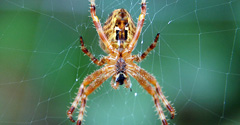
It is one of the most common spiders, which lives in bushes and thickets between August and October. The male measures 5-10 mm and the female 12-17 mm. It is light brown or nearly black in colour, with a white cross on the abdomen. It feeds on flying insects that it catches in its web. At the end of the summer, the female lays cocoons with its eggs in protected places and the young leave the cocoon in spring.
2006 - 2007 © Anteiglesia de Abadiño Town Council - All rights reserved